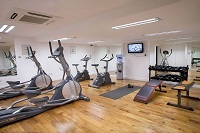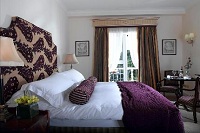Venue & Hospitality
Newlands Cross, Nass Road, Dublin 22, Ireland
Conference Dates: November 26-27, 2018
Hotel Services & Amenities
- Audio/Visual Equipment Rental.
- Business Center.
- Business Phone Service.
- Complimentary Printing Service.
- Express Mail.
- Fax.
- Meeting Rooms.
- Office Rental.
- Photo Copying Service.
- Secretarial Service.
- Telex.
- Typewriter.
- Video Conference.
- Video Messaging.
- Video Phone.
- ATM.
- Baggage Storage.



Transportation
Driving Directions to
Route Map
About City
Dublin is the capital and largest city in Ireland. Dublin is in the province of Leinster on the east coast of Ireland, at the mouth of the River Liffey and bordered on the south by the Wicklow Mountains. The city has an urban area population of 1,173,179. The population of the Dublin Region, as of 2016, was 1,347,359 and the population of the Greater Dublin area was 1,904,806. Know more at Immunology Conferences
Dublin is situated at the mouth of the River Liffey and encompasses a land area of approximately 115 square kilometers (44 sq. mi) in east-central Ireland. It is bordered by a low mountain range to the south and surrounded by flat farmland to the north and west. The Liffey divides the city in two between the North side and the Southside. Each of these is further divided by two lesser rivers – the River Tolka running southeast into Dublin Bay, and the River Dodder running northeast to the mouth of the Liffey. Two further water bodies – the Grand Canal on the Southside and the Royal Canal on the north side – ring the inner city on their way from the west and the River Shannon. Know more Immunology Conferences Dublin.
Dublin has many landmarks and monuments dating back hundreds of years. One of the oldest is Dublin Castle, which was first founded as a major defensive work on the orders of England's King John in 1204, shortly after the Norman invasion of Ireland in 1169, when it was commanded that a castle be built with strong walls and good ditches for the defense of the city, the administration of justice, and the protection of the King's treasure. Largely complete by 1230, the castle was of typical Norman courtyard design, with a central square without a keep, bounded on all sides by tall defensive walls and protected at each corner by a circular tower. Sited to the south-east of Norman Dublin, the castle formed one corner of the outer perimeter of the city, using the River Poddle as a natural means of defense. Know more Immunology Conferences
As of the 2018 Michelin Guide, five Dublin restaurants shared six Michelin stars - including Restaurant Patrick Guilbaud with two. Irish-born Kevin Thornton was awarded two Michelin stars in 2001 - though his restaurant, Thornton's, closed in 2016. The Dublin Institute of Technology commenced a bachelor's degree in culinary skills in 1999.Know more Immunology Conferences Dublin.
